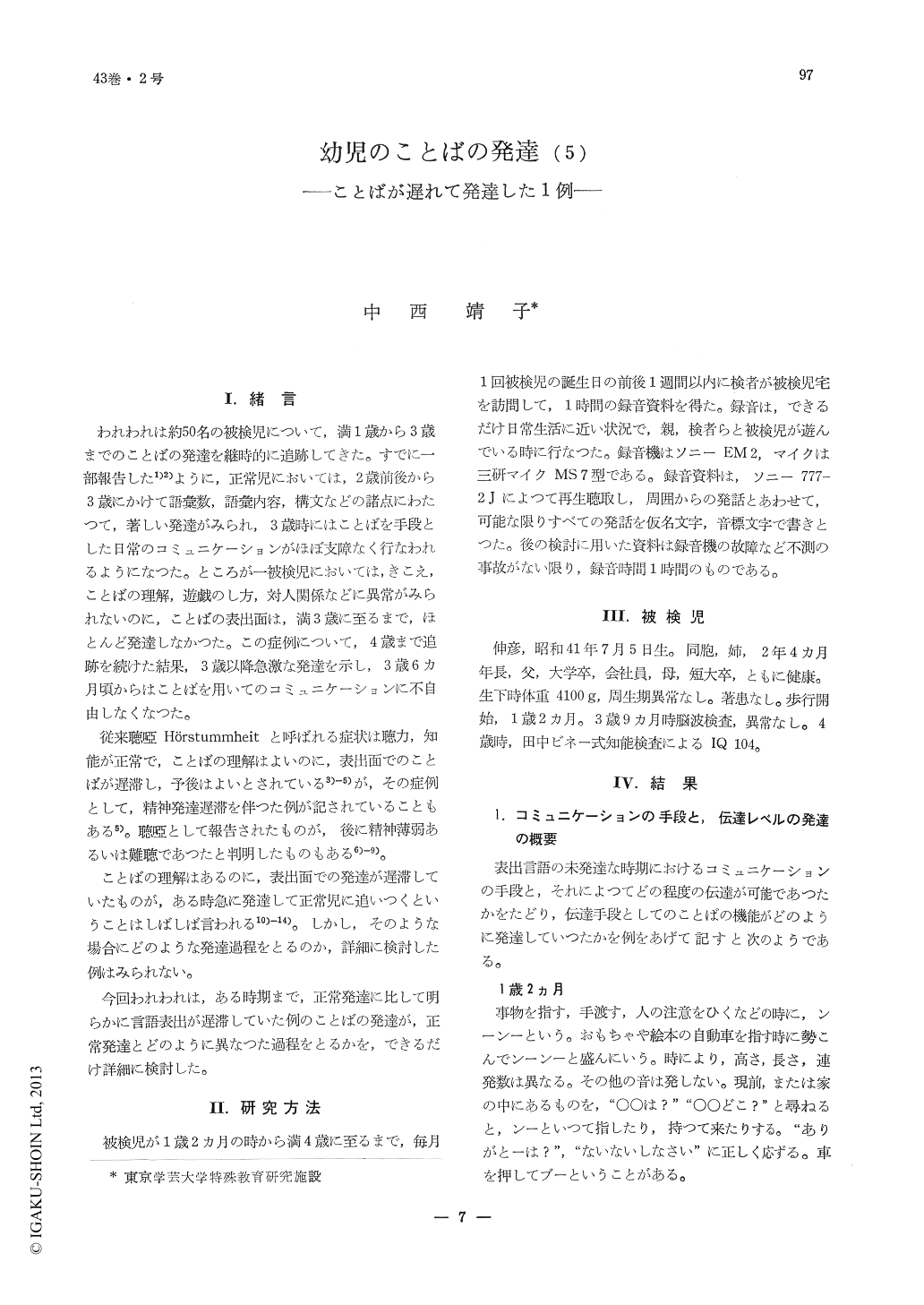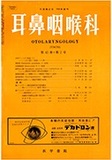Japanese
English
- 有料閲覧
- Abstract 文献概要
- 1ページ目 Look Inside
Ⅰ.緒言
われわれは約50名の被検児について,満1歳から3歳までのことばの発達を継時的に追跡してきた。すでに一部報告した1)2)ように,正常児においては,2歳前後から3歳にかけて語彙数,語彙内容,構文などの諸点にわたつて,著しい発達がみられ,3歳時にはことばを手段とした日常のコミュニケーションがほぼ支障なく行なわれるようになつた。ところが一被検児においては,きこえ,ことばの理解,遊戯のし方,対人関係などに異常がみられないのに,ことばの表出面は,満3歳に至るまで,ほとんど発達しなかつた。この症例について,4歳まで追跡を続けた結果,3歳以降急激な発達を示し,3歳6カ月頃からはことばを用いてのコミュニケーションに不自由しなくなつた。
従来聴唖Hörstummheitと呼ばれる症状は聴力,知能が正常で,ことばの理解はよいのに,表出面でのことばが遅滞し,予後はよいとされている3)-5)が,その症例として,精神発達遅滞を伴つた例が記されていることもある5)。聴唖として報告されたものが,後に精神薄弱あるいは難聴であつたと判明したものもある6)-9)。
Among the 50 subjects whose speech development was studied longitudinally from one year to three years of age, there was a boy with normal hearing, intelligence and speech comprehension, without any motor incoordination or emotional problems who developed scarcely any speech untill three years of age. The developmental processes of this boy from 14 months to his four years of age were reported and discussed.
During his speechless period he communicated with jestures. Nonsense syllables and echoic utterances were scarcely heard.
Between 32 months and 38 his vocabulary increased slightly and at 39 months, the first spurt of vocabulary increase was observed. The coming vocabulary was in the adult language form without many articulation errors. Various parts of speech appeared nearly at once. Sentence utterances appeared at 39 months and increased rapidly with functional words. At 42 months he practically caught up with other children.
The echoic utterances increased almost in parallel with the increase in vocabulary. At 41 months it reached its peak, after which it decreased.
The significance of the peak in echoic utterances and also of the percentage of core words used by the subject in the total core vocabulary for indicating the developmental language level was discussed.

Copyright © 1971, Igaku-Shoin Ltd. All rights reserved.


